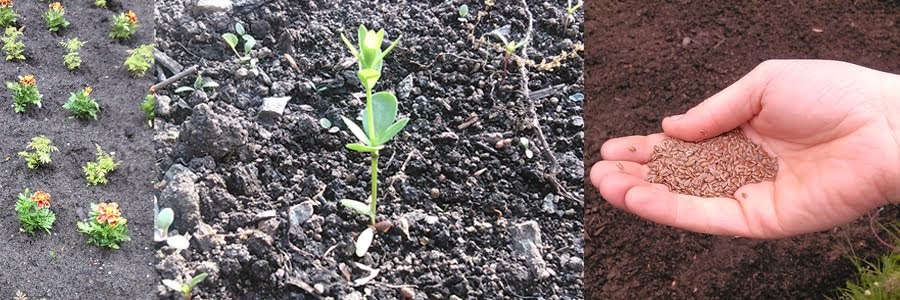I'm pleased to announce that we'll be hosting our first event of the season: the Hedge Laying Workshop!
We will be creating a living fence along the north side of the Flax Field at Aberthau House. Drawing on Brian’s agricultural heritage and my sculptural experience, we’ll use a combination of traditional and contemporary techniques to create a living windbreak that will grow and evolve with the garden.
This event is free thanks to our sponsors, Vancouver Parks' Neighbourhood Matching Fund and West Point Grey Community Centre.
Here is the link to register on Eventbrite:
http://aberthauhedgelay.eventbrite.ca
Sharon Kallis and Caitlin ffrench identified a need for a windbreak structure last year, when the flax field was sorely pressed by the prevailing winds from the ocean along Jericho Beach. As a group of environmental artists, creating a living fence sculpture seemed the obvious solution.
Aside from hedges -- of which there are many stunning examples in Vancouver -- to my knowledge there is only one other living fence in a Vancouver Park, a woven willow barrier that protects the wetlands at the north end of Trout Lake. Our hope is that this project raises the profile of living fences in Vancouver and inspires others to appreciate them and experiment with them.
In Europe there is a very long tradition of hedges as fences. To my knowledge, BC doesn't have a similar historic tradition of fence-making, except for the picturesque split-rail cedar fences; but those were by no means used as extensively as hedges and stone walls in Britain -- there just isn't the same tradition of tightly-packed agricultural holdings in BC. Nova Scotia is a little different… I wonder what they used for fences in eastern parts of Canada?
Fence-making is an agricultural activity that came with the Europeans; to my knowledge, some First Nations made amazing fish weirs and traps -- some of hazel and red osier dogwood -- but they didn't fence the land.
As far as I can tell, wire fences have been the norm since at least WWII. In my childhood in the rich farmland around Pitt Meadows, my grandfather (1915-2005) and my father (b.1949) built fences of cedar posts pounded into the ground with a fence-pounding tool; and between these was tacked wire mesh of any of a variety of different gauges, or barbed wire, or even (to keep the livestock in) electric fence wire. (Shudder…I was an inquisitive child, but I learned quickly.)
Brian had a similarly colourful upbringing with a much more traditional set of skills, and he had this to say:
I was raised on a small family farm in Wales and every field had a hedge that had to be maintained to make sure that the animals didn't stray. My Dad was the expert hedger then, and his expertise included not only the hedgelaying skills that all the farmers had, but a repair method for temporarily repairing overgrown hedges by cutting down the branchs of the overgrown hedge plants and shoving them back into the base of the hedge where there were gaps . In our local dialect he " tined" the hedge with " trws" and stopped up the "glats" until the hedge became too overgrown and had to be "layed!" He of course used a "brumuk" (broomhook or billhook ) and a pikel (pitchfork).
"Living fences", or hedgerows, were planted with a variety of local plants that were not only very good at restricting livestock to their fields, but also for creating important wildlife sanctuary and windbreaks for gardens and yards.
In order to create a "living fence" the hedge must have a certain variey of plants which are capable of being "pleached" and "laid." These terms are used to describe the techniques which involve the use of hand tools and can only be done in late Winter or early Spring when there is less foliage on the plants and easier access to the base of the hedging. The hedge plants are woven around wooden stakes places at intervals along the hedge line (or hedge row ). The tools are the billhook and the handsaw (or axe if the hedge is really overgrown). After the hedge is "laid " it is a simple process to keep the hedge in "shape" using hedge clippers or mechanical hedge cutters.
The living fence is a great example of a tradition which has evolved from being a practical solution to famers' needs to a scenic solution for the boundaries of gardens and park areas.
For more in-depth information about the history of living fences and hedgerows in the UK, please go to the Hedge Laying website.
And so that you can see what Brian is describing, here is a selection of Youtube videos…
Modern ‘class’ run by countryside officer, explaining a few of the finer points... good one to watch first.
short slideshow of very WOODY hedge...
Another good video for the new person...
Hedge laying South England ‘Woodland TV’ Hedgelayer’s Society
Longer demo video:
great shots of many different hedges, showing back (cleared) sides
Commercial hedge laying with chainsaw...



